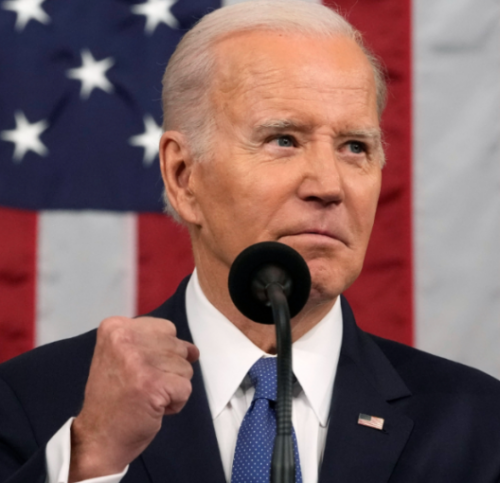- March 11, 2023
- Posted by: LSN Partners
- Categories: Federal, Government Affairs
By: LSN Partners on March 8, 2024
Last night, President Joe Biden used his State of the Union address to defend his record on the economy amid a potentially uphill climb to a second term, despite the l egal troubles facing his opponent, former President Trump.
egal troubles facing his opponent, former President Trump.
The president described the economy as fundamentally strong, contrary to perceptions voters have shared with pollsters, who report disapproval of how Biden has managed the economy, especially inflation.
President Joe Biden also shared his economic agenda, offering a list of policies that he said would lower drug costs, provide more affordable housing, expand access to preschool, and protect Social Security and Medicare, all while reducing federal deficits.
Biden said his tax policies would help shave $3 trillion from deficits over the next decade while anyone making less than $400,000 a year would not pay “a penny” more in taxes. He also sought to draw contrasts with former President Donald Trump, who credits a 2017 package of tax cuts for triggering economic growth.
Biden pledged to expand Medicare’s power to negotiate drug prices to 500 more prescription medicines, cap prescription drug costs at $2,000 a year, and expand a monthly cap on out-of-pocket insulin costs. He would also spend $12 billion on women’s health research and make permanent expanded tax credits to reduce health insurance premiums that expire at the end of next year. He also addressed federal abortion rights and the need to guarantee the right to in vitro fertilization, or IVF, nationwide. The president urged Americans to hand Democrats control of the House and Senate — and reelect him — as part of a vow to restore federal abortion rights protections.
Biden firmly rejected cuts to Social Security or Medicare benefits, both of which need financial rescues to shore up dwindling trust funds. Some lawmakers are pushing a bipartisan fiscal commission on deficit reduction that would leave the door open to entitlement cuts.
Biden pleaded with Republicans to pass a bipartisan Senate bill that packaged aid to Ukraine, Israel, and Taiwan with increased resources for the U.S. southern border, along with changes to asylum laws and other measures designed to reduce the flow of migrants. Biden also demanded that Israeli leaders prioritize access to humanitarian assistance and advocated for a two-state solution to the Israel-Palestinian conflict in the long term. He further highlighted his administration’s efforts to establish a cease-fire in Gaza and announced plans to open up a seaborne route to get humanitarian help to Palestinians in the enclave, Briana Reilly writes here.
Calling for tax increases on high-income households and corporations, Biden touched on a tax proposal as a precursor to his formal fiscal 2025 budget rollout on Monday.
The president also directly addressed the persistent criticism of his age, noting that his long experience in government has given him greater insight into how to lead the country.